Super blood wolf moon: Stunning photos of the rare celestial event around the globe
The moon's reddish hue captivated millions of star-gazers worldwide.
Star-gazers around the world were treated to a stunning lunar phenomenon on Sunday night to welcome the new year, and the images did not disappoint.
The super blood wolf moon was actually the result of three lunar events combined. It was dubbed the "wolf moon" because it was the first full moon in January and was considered a "super moon" because the full moon was at its closest point to Earth, according to NASA.
The "blood moon" is the part of the total lunar eclipse in which all the earth's sunrises and sunsets project onto the moon's surface as it passes through Earth's shadow, giving it the crimson color.
The reddish hue of the super blood wolf moon was visible to people in the Americas, Europe, Africa and Pacific region from late Sunday into early Monday, according to NASA.
A photo taken out of Encinitas, California, showed the blood moon in its full, vivacious glory.
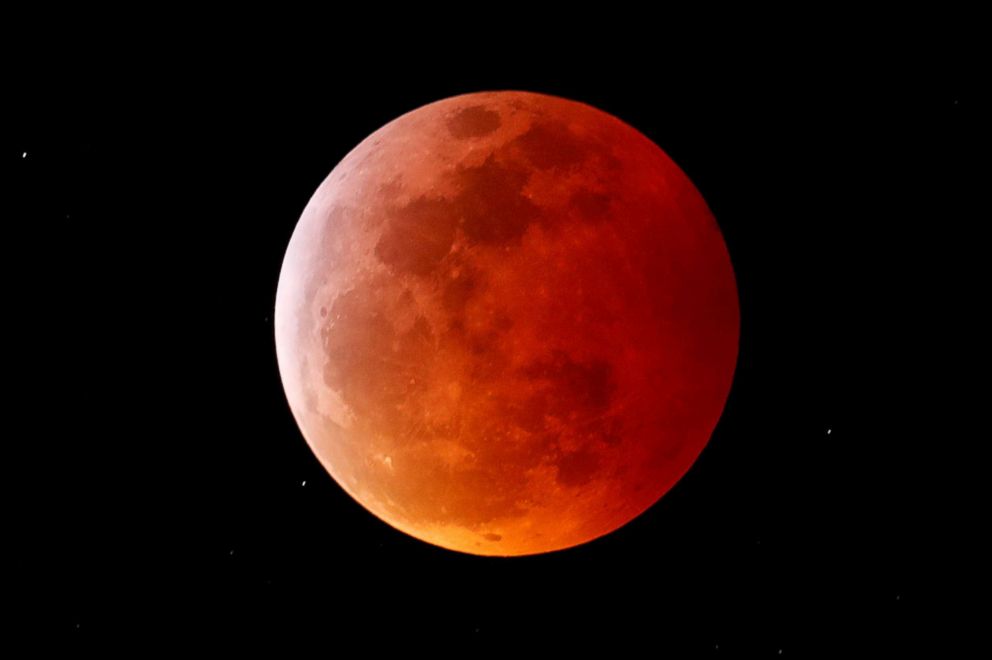
An outline of the super blood wolf moon could be seen over Larissa, Greece, one of the oldest cities in the world and the site of the ancient acropolis of Argos.
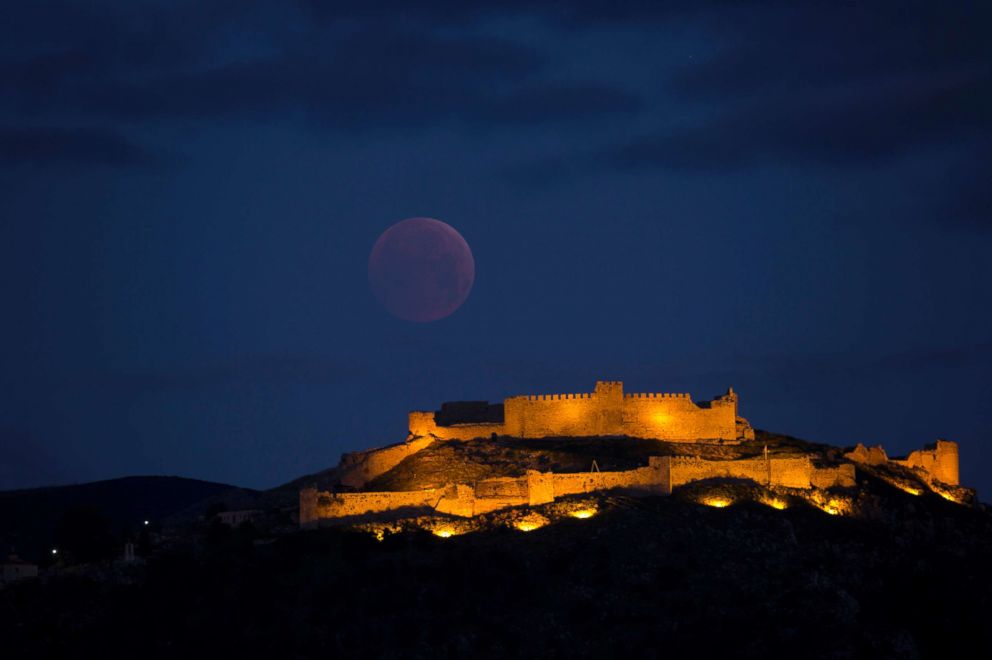
In Brussels, the reddish moon was seen rising over the top of the Cinquantenaire arch.
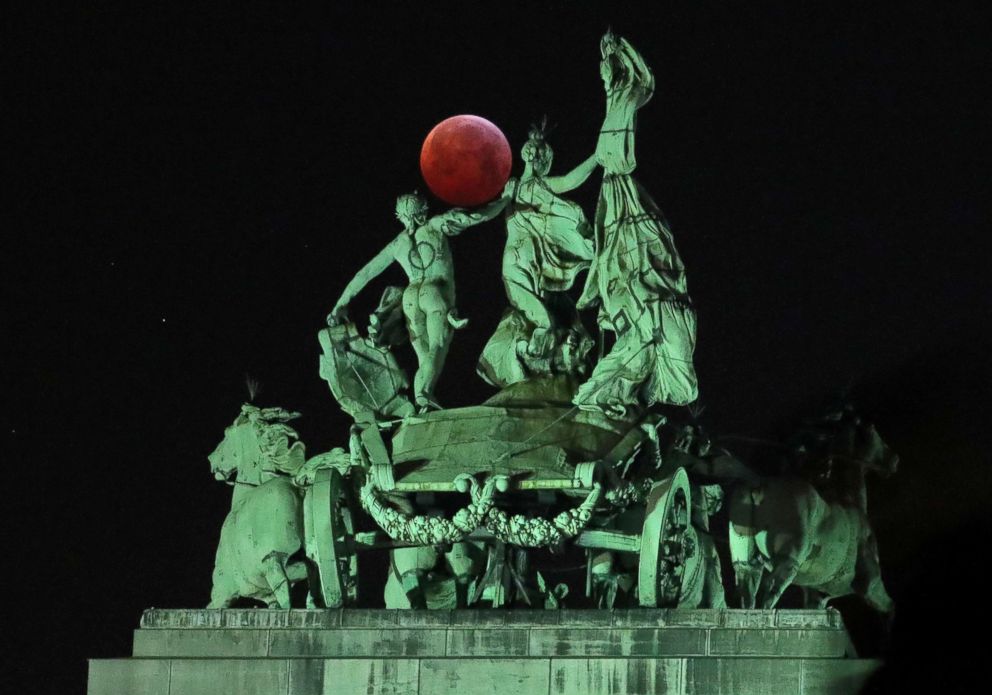
The blood moon's color appeared especially brilliant in a photo taken next to a mine winding tower at the Ewald Coal Mine in Herten, Germany.

People at the U.S. border were also able to see the super moon. In Tijuana, Mexico, a silhouette of the border fence was illuminated by the moon's light.
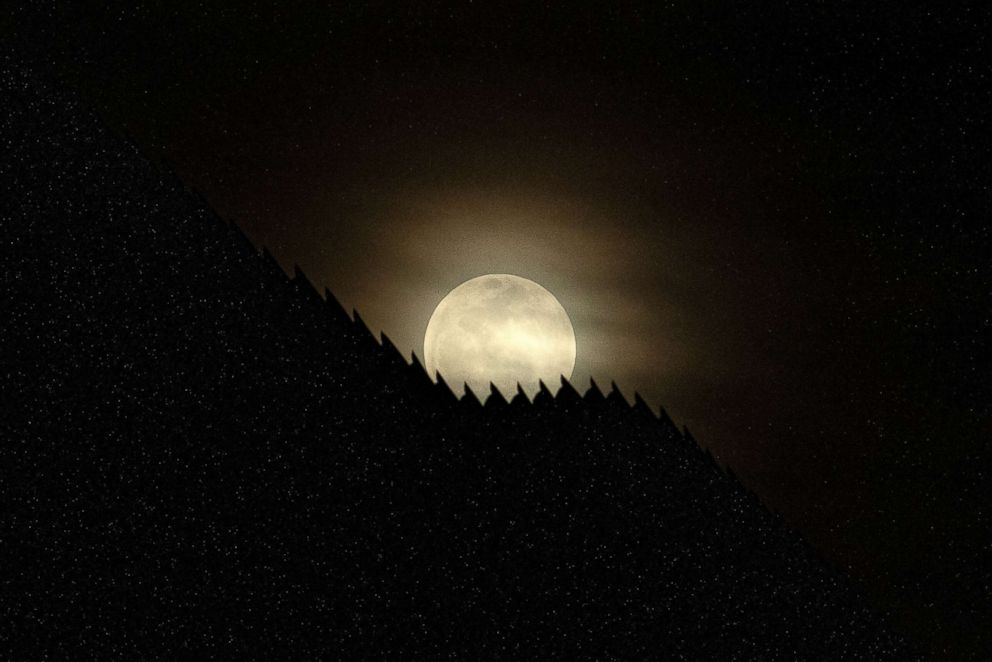
A line of moon-watchers gathered in Vienna, Austria, to catch a glimpse of the super moon.
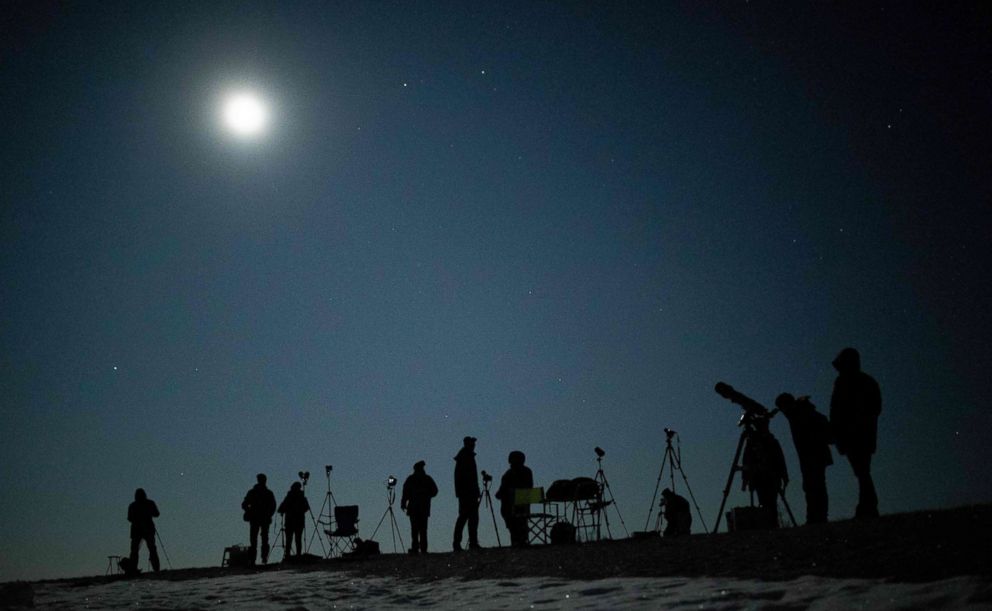
Another person captured a moment during the eclipse over a frozen Lake Inari, in Lapland, Finland. Temperatures were negative 31 degrees Celsius.
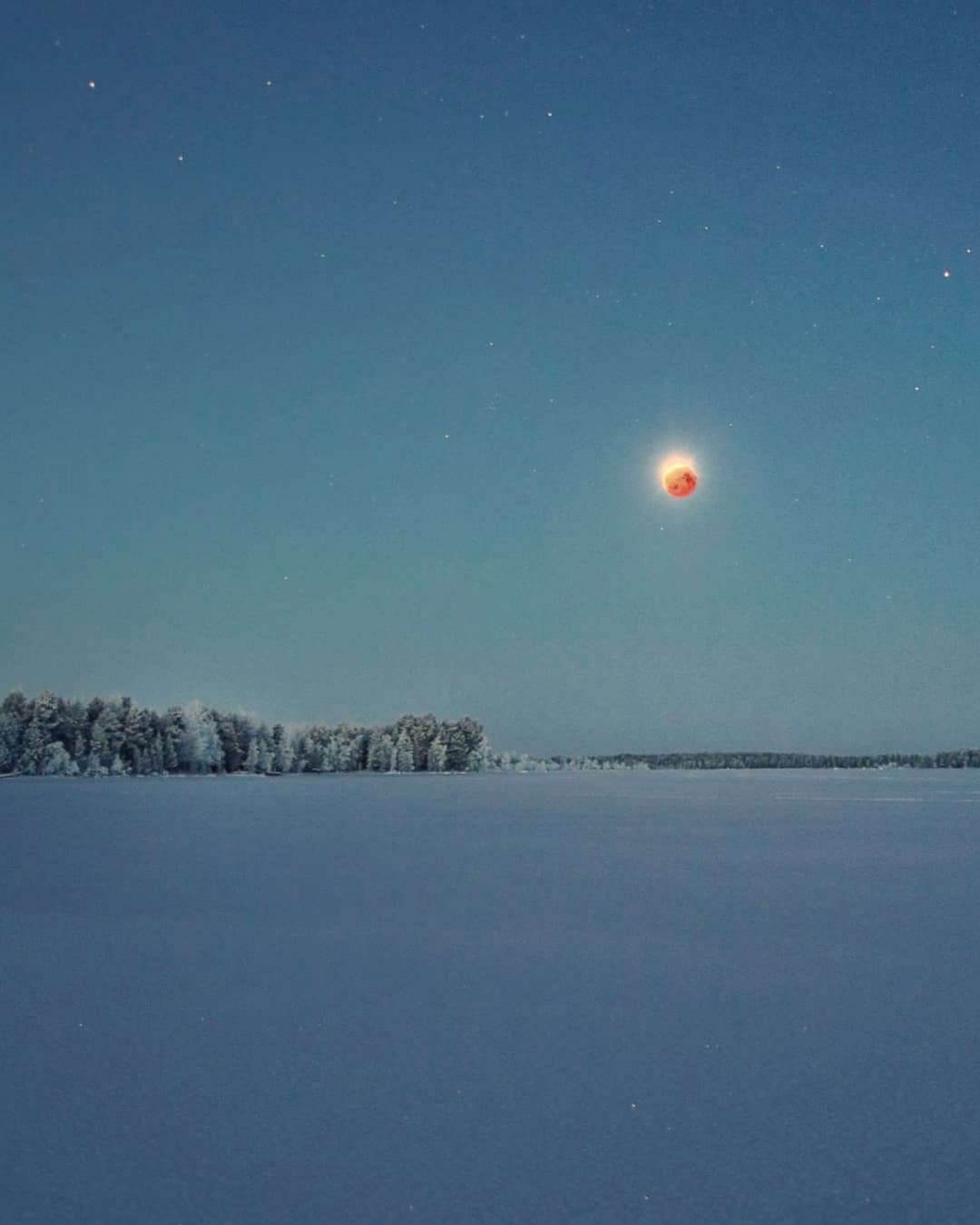
A photo taken out of Panama City, Florida, shows each stage of the super blood wolf moon.
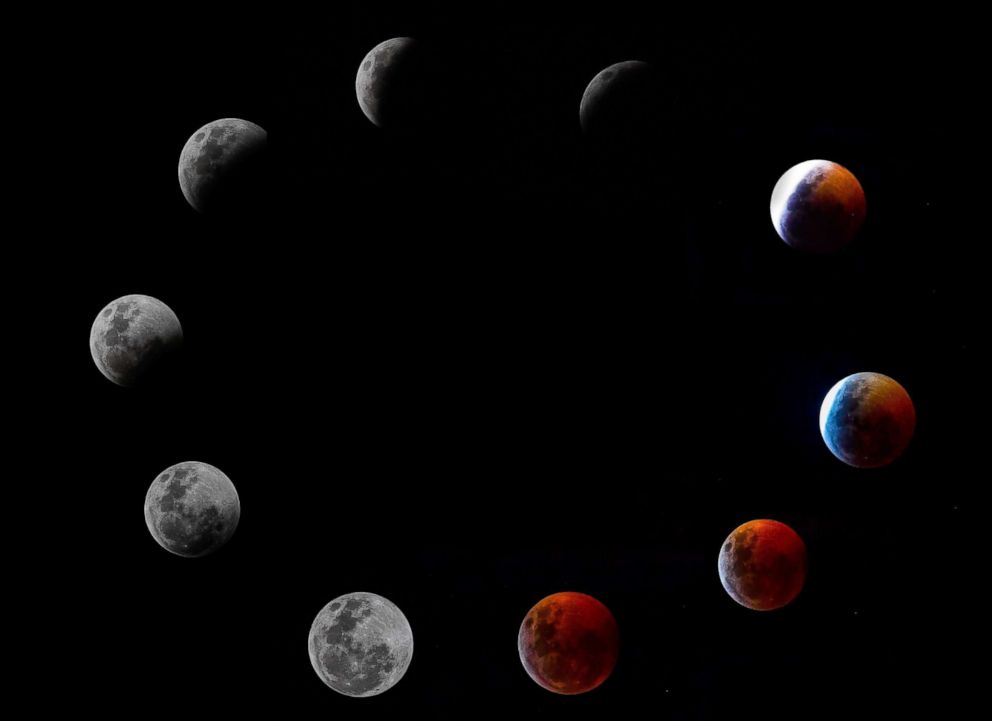
The lunar eclipse was also captured near the 'Tiger and Turtle' landmark in Duisburg, Germany.

ABC News' Meredith Longo, Becky Perlow and Bopha Phorn contributed to this report.




